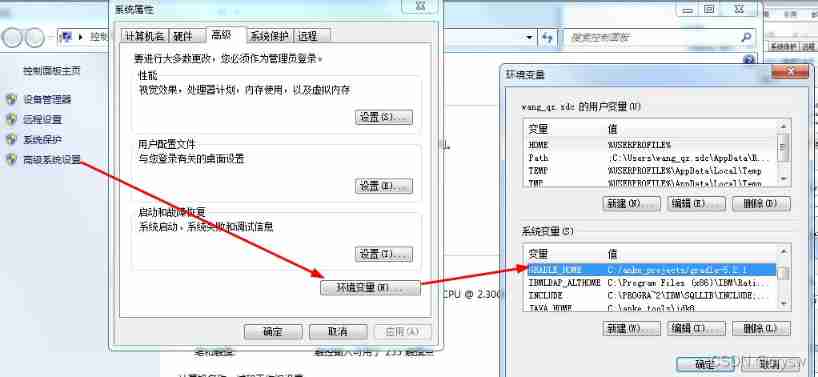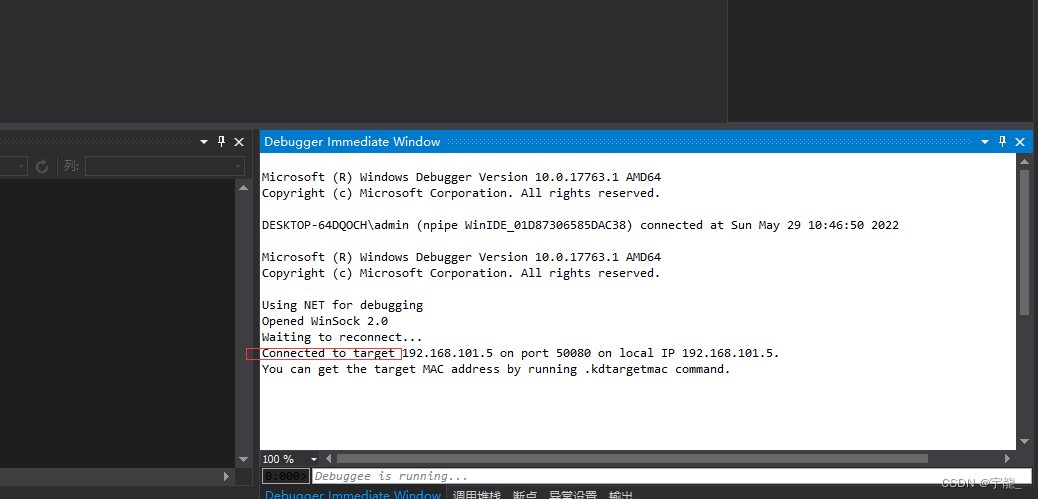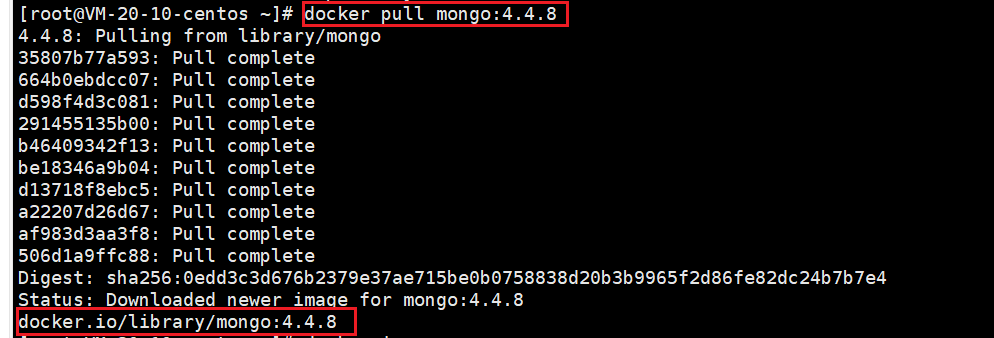当前位置:网站首页>[combinatorics] combinatorial identity (sum of combinatorial identity products 1 | sum of products 1 proof | sum of combinatorial identity products 2 | sum of products 2 proof)
[combinatorics] combinatorial identity (sum of combinatorial identity products 1 | sum of products 1 proof | sum of combinatorial identity products 2 | sum of products 2 proof)
2022-07-03 16:02:00 【Programmer community】
List of articles
- One 、 Combinatorial identity ( Sum of product ) 1
- Two 、 Combinatorial identity ( Sum of product ) 1 prove
- 3、 ... and 、 Combinatorial identity ( Sum of product ) 2
- Four 、 Combinatorial identity ( Sum of product ) 2 prove
Combinatorial identity reference blog :
- 【 Combinatorial mathematics 】 Combinatorial identity ( Recurrence Combinatorial identity | Change the next term to sum Combinatorial identity Simple and | Change the next term to sum Combinatorial identity Staggered and )
- 【 Combinatorial mathematics 】 Combinatorial identity ( Change the next term to sum 3 Combinatorial identity | Change the next term to sum 4 Combinatorial identity | binomial theorem + Derivation Prove the combinatorial identity | Use known combinatorial identities to prove combinatorial identities )
- 【 Combinatorial mathematics 】 Combinatorial identity ( Review of eight combinatorial identities | Combinatorial identity product 1 | prove | Use scenarios )
One 、 Combinatorial identity ( Sum of product ) 1
Combinatorial identity ( Sum of product ) 1 :
∑
k
=
0
r
(
m
k
)
(
n
r
−
k
)
=
(
m
+
n
r
)
,
r
=
min
{
m
,
n
}
\sum\limits_{k=0}^{r}\dbinom{m}{k}\dbinom{n}{r-k} = \dbinom{m + n }{r} , \ \ \ \ \ \ r= \min \{ m, n \}
k=0∑r(km)(r−kn)=(rm+n), r=min{ m,n}
Two 、 Combinatorial identity ( Sum of product ) 1 prove
1 . The combination analysis method uses : When using the combination analysis method to prove the combination number , Specify the set first , Specify elements , Specify two counting problems , On both sides of the formula are the counts of the same problem ;
( 1 ) Specify the collection : Specify the set in which the count is generated ;
( 2 ) Specify the counting problem : The following two counting problems are the counting of the same problem ;
- ① problem 1 : The left side of the equal sign represents the counting problem ;
- ② problem 2 : The right side of the equal sign represents the counting problem ;
( 3 ) Equivalent description : It shows that the two counting problems are the same ;
2 . Use Combinatorial analysis Method to prove :
( 1 ) Specify the collection : Define two sets ,
A
=
{
a
1
,
a
2
,
⋯
,
a
m
}
A = \{ a_1, a_2 , \cdots , a_m \}
A={ a1,a2,⋯,am}
B
=
{
b
1
,
b
2
,
⋯
,
b
n
}
B = \{ b_1, b_2 , \cdots , b_n \}
B={ b1,b2,⋯,bn}
( 2 ) Specify the count to the right of the equal sign :
(
m
+
n
r
)
\dbinom{m + n }{r}
(rm+n) representative Count as follows :
From here Two sets of
m
+
n
m + n
m+n Of the elements , selection
r
r
r Elements , In this way, a selection problem is constructed ;
( 3 ) Specify the count to the left of the equal sign :
To the left of the equal sign Combinatorial number
∑
k
=
0
r
(
m
k
)
(
n
r
−
k
)
\sum\limits_{k=0}^{r}\dbinom{m}{k}\dbinom{n}{r-k}
k=0∑r(km)(r−kn) Count analysis :
First classification after Step by step : In the above formula , With product , There is a summation , It means that this is First classification ( The law of addition ) , Used in each category Step by step ( product rule ) Calculation ;
according to From two sets Elected by the
r
r
r Subset , How many
A
=
{
a
1
,
a
2
,
⋯
,
a
m
}
A = \{ a_1, a_2 , \cdots , a_m \}
A={ a1,a2,⋯,am} The elements in the collection are classified ,
contain
A
A
A The elements in
k
k
k individual ,
The rest
r
−
k
r-k
r−k The element is taken from
B
=
{
b
1
,
b
2
,
⋯
,
b
n
}
B = \{ b_1, b_2 , \cdots , b_n \}
B={ b1,b2,⋯,bn} aggregate ;
The logic of step-by-step processing is : First in
A
A
A Select from collection
k
k
k Elements , And then in
B
B
B Select from collection
r
−
k
r-k
r−k Elements ;
therefore
k
k
k Most take
r
r
r individual ( All from
A
A
A Take from set ) , Take the least
0
0
0 individual ( All from
B
B
B Take from set ) ;
( 4 ) The counts on the left and right sides of the above equation are the same , It's all in Take... From two sets
r
r
r The number of schemes per element ;
3、 ... and 、 Combinatorial identity ( Sum of product ) 2
Combinatorial identity ( Sum of product ) 2 :
∑
k
=
0
r
(
m
k
)
(
n
k
)
=
(
m
+
n
m
)
\sum\limits_{k=0}^{r}\dbinom{m}{k}\dbinom{n}{k} = \dbinom{m + n }{m}
k=0∑r(km)(kn)=(mm+n)
Four 、 Combinatorial identity ( Sum of product ) 2 prove
The formula is “ Combinatorial identity ( Sum of product ) 1” Special case of ,
It proves the above “ Combinatorial identity ( Sum of product ) 1” After formula , This formula is a corollary of the above formula ;
stay “ Combinatorial identity ( Sum of product ) 1” The formula
∑
k
=
0
r
(
m
k
)
(
n
r
−
k
)
=
(
m
+
n
r
)
,
r
=
min
{
m
,
n
}
\sum\limits_{k=0}^{r}\dbinom{m}{k}\dbinom{n}{r-k} = \dbinom{m + n }{r} , \ \ \ \ \ \ r= \min \{ m, n \}
k=0∑r(km)(r−kn)=(rm+n), r=min{ m,n}
in , Make
r
=
n
r=n
r=n , It becomes a formula
∑
k
=
0
n
(
m
k
)
(
n
n
−
k
)
=
(
m
+
n
n
)
\sum\limits_{k=0}^{n}\dbinom{m}{k}\dbinom{n}{n-k} = \dbinom{m + n }{n}
k=0∑n(km)(n−kn)=(nm+n)
(
n
n
−
k
)
\dbinom{n}{n-k}
(n−kn) And
(
n
k
)
\dbinom{n}{k}
(kn) It is equivalent. , So the formula can become :
∑
k
=
0
n
(
m
k
)
(
n
k
)
=
(
m
+
n
n
)
=
(
m
+
n
n
)
\sum\limits_{k=0}^{n}\dbinom{m}{k}\dbinom{n}{k} = \dbinom{m + n }{n} =\dbinom{m + n }{n}
k=0∑n(km)(kn)=(nm+n)=(nm+n)
therefore “ Combinatorial identity ( Sum of product ) 2” yes “ Combinatorial identity ( Sum of product ) 1” A special case of ;
边栏推荐
- How to use AAB to APK and APK to AAB of Google play apps on the shelves
- Get the executable path through the process PID (queryfullprocessimagename)
- Go language self-study series | if else if statement in golang
- Unity function - unity offline document download and use
- Batch files: list all files in a directory with relative paths - batch files: list all files in a directory with relative paths
- Break through 1million, sword finger 2million!
- [combinatorics] combinatorial identity (sum of variable upper terms 1 combinatorial identity | summary of three combinatorial identity proof methods | proof of sum of variable upper terms 1 combinator
- VC下Unicode和ANSI互转,CStringW和std::string互转
- App mobile terminal test [5] file writing and reading
- 深度学习之三维重建
猜你喜欢

秒杀系统1-登录功能

Find mapping relationship

突破100万,剑指200万!

Detailed explanation of string function and string function with unlimited length
![SDNU_ ACM_ ICPC_ 2022_ Winter_ Practice_ 4th [individual]](/img/3b/7523eca5bbcdbba29d9b7f6e4791a5.jpg)
SDNU_ ACM_ ICPC_ 2022_ Winter_ Practice_ 4th [individual]

Create gradle project

“用Android复刻Apple产品UI”(3)—优雅的数据统计图表

Vs2017 is driven by IP debugging (dual machine debugging)

MongoDB 的安装和基本操作

Semi supervised learning
随机推荐
VS2017通过IP调试驱动(双机调试)
近视:摘镜or配镜?这些问题必须先了解清楚
大csv拆分和合并
秒杀系统3-商品列表和商品详情
Microservice API gateway
Jmeter线程组功能介绍
How to use AAB to APK and APK to AAB of Google play apps on the shelves
嵌入式开发:避免开源软件的7个理由
驱动与应用程序通信
Shell script import and export data
uploads-labs靶场(附源码分析)(更新中)
Why can't strings be directly compared with equals; Why can't some integers be directly compared with the equal sign
Subclass hides the function with the same name of the parent class
Secsha system 1- login function
找映射关系
Popular understanding of ovo and ovr
Pandora IOT development board learning (HAL Library) - Experiment 5 external interrupt experiment (learning notes)
首发!!lancet饿了么官方文档
win32创建窗口及按钮(轻量级)
Problems of CString in multithreading